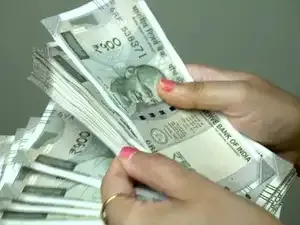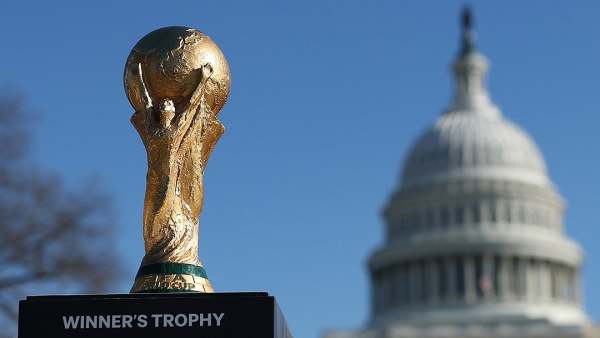State Bank of India estimates Indian states to remain net gainers from GST collections in this fiscal year despite upcoming rate rationalisation, in contrast to some states fearing revenue loss from tax cuts as proposed by Prime Minister Narendra Modi that is big touted as Diwali gift to the Indian citizens.
This is because of the way GST revenues are shared, the government-owned bank sad in a research note First, GST is split equally between the Centre and the States, with each getting 50% of the collections. Second, under tax devolution, 41% of the Centre’s share goes back to the States. Put together, this means that out of every Rs 100 collected in GST, the states end up receiving about Rs 70.5, or roughly 70% of the total revenues, SBI noted.
"Our projections for FY26 indicate that states are expected to receive at least ~Rs 10 lakh cr in SGST plus Rs 4.1 lakh crore through devolution thereby making them net gainers," the bank said. " The gains accrues even when we do not take the additional consumption boost due to rate rationalization (At 9.5% effective GST rate, this translates into a revenue gain of Rs 52000 crore; Rs 26000 crore each to Centre and States)."
Eight opposition-run states said last week that the proposed Goods and Services Tax (GST) reforms could cost them up to Rs 2 lakh crore in lost revenue, and demanded full compensation for five years. They suggested adding a levy on sin goods, along with the proposed 40% GST rate, to keep the overall tax burden unchanged and ensure fair distribution among the states.
Finance ministers from Tamil Nadu, West Bengal, Karnataka, Telangana, Kerala, Punjab, Jharkhand and Himachal Pradesh met ahead of the GST Council meeting set for September 3-4.
Also Read: Opposition states flag Rs 2 lakh crore loss, seek compensation from Centre
On India’s Independence Day, Prime Minister Modi promised 1.4 billion consumers a big Diwali gift in the form of lower consumption taxes, seen as a possible step to cushion the impact if President Donald Trump follows through on his threat to double tariffs on India this week.
Also Read: Next-gen GST reforms by Diwali, will reduce tax on every day use items, announces PM Modi
Media reports have said that the revised Goods and Services Tax (GST) will bring together the many current rates — zero, 5%, 12%, 18% and 28% — into fewer slabs. Everyday items that are now in the 12% bracket, such as dairy, juices, snacks, coffee, textiles and footwear, are expected to shift to 5%. The 28% rate applied on cement, televisions, refrigerators and air-conditioners may drop to 18%.
Expensive cars are at present taxed at 48%. This is because they face a 20% additional levy on top of the 28% GST. Carmakers have argued for a long time that this is unviable for the industry. It is expected that this will be replaced by a new all-inclusive rate of 40%. Small cars and motorcycles of up to 350cc may fall under the 18% tax slab.
Also Read: India seen among Asia’s fastest growing economies as Trump’s tariff meets PM Modi’s GST power move
SBI said, evidence from earlier rounds of GST rate changes, such as those in July 2018 and October 2019, shows that rationalisation does not always weaken revenue collections. Instead, it points to a temporary adjustment phase followed by stronger inflows.
A cut in rates can cause a short-term fall of about 3–4% month on month, which is around Rs 5,000 crore or an annualised Rs 60,000 crore. But revenues usually recover, with steady growth of 5–6% per month.
"Importantly, rationalisation should be seen less as a short-lived stimulus to demand and more as a structural measure that simplifies the tax system, reduces compliance burdens, and enhances voluntary compliance, thereby widening the tax base. In this broader sense, the Hon’ble PM’s vision of a streamlined GST framework is best understood as a step towards long-term revenue buoyancy and greater efficiency in the economy," SBI said.
The GST Council is scheduled to meet on 3 and 4 September to discuss several key matters, including rationalisation of tax rates, ease of compliance and restructuring of cess. However, SBI said hat there are some specific issues that they believe should also be taken up.
With the loans taken by the Centre to pay compensation cess to states expected to be fully recouped and repaid by November–December, a surplus of about Rs 50,000 crore is likely to remain in the compensation fund. This amount, SBI said, could be used to compensate states for the revenue loss that may arise due to rate rationalisation.
The Council should also consider preparing a medium-term plan to bring petroleum, electricity and aviation turbine fuel under the GST framework, SBI said.
The bank added that to improve ease of living, the government should make greater use of technology to speed up and simplify the GST registration process. Pre-filled returns should be implemented to reduce manual intervention and eliminate mismatches, while refund claims could be processed more quickly and in a more automated manner.
Another issue that requires attention is the inverted duty structure (IDS) in GST, where the rate on inputs is higher than on outputs, SBI said. This creates difficulties for businesses, especially with respect to the refund of input tax credit (ITC). For example, if the tax rate on inputs such as solar panels is 18% while the rate on outputs like green electricity is 0%, businesses continue to face the problem of accumulated ITC. Although GST law allows for a refund of unutilised ITC, the process creates unnecessary burdens for businesses, raises their tax costs and eventually pushes up prices for consumers. This issue also needs to be addressed.
This is because of the way GST revenues are shared, the government-owned bank sad in a research note First, GST is split equally between the Centre and the States, with each getting 50% of the collections. Second, under tax devolution, 41% of the Centre’s share goes back to the States. Put together, this means that out of every Rs 100 collected in GST, the states end up receiving about Rs 70.5, or roughly 70% of the total revenues, SBI noted.
"Our projections for FY26 indicate that states are expected to receive at least ~Rs 10 lakh cr in SGST plus Rs 4.1 lakh crore through devolution thereby making them net gainers," the bank said. " The gains accrues even when we do not take the additional consumption boost due to rate rationalization (At 9.5% effective GST rate, this translates into a revenue gain of Rs 52000 crore; Rs 26000 crore each to Centre and States)."
Eight opposition-run states said last week that the proposed Goods and Services Tax (GST) reforms could cost them up to Rs 2 lakh crore in lost revenue, and demanded full compensation for five years. They suggested adding a levy on sin goods, along with the proposed 40% GST rate, to keep the overall tax burden unchanged and ensure fair distribution among the states.
Finance ministers from Tamil Nadu, West Bengal, Karnataka, Telangana, Kerala, Punjab, Jharkhand and Himachal Pradesh met ahead of the GST Council meeting set for September 3-4.
Also Read: Opposition states flag Rs 2 lakh crore loss, seek compensation from Centre
On India’s Independence Day, Prime Minister Modi promised 1.4 billion consumers a big Diwali gift in the form of lower consumption taxes, seen as a possible step to cushion the impact if President Donald Trump follows through on his threat to double tariffs on India this week.
Also Read: Next-gen GST reforms by Diwali, will reduce tax on every day use items, announces PM Modi
Media reports have said that the revised Goods and Services Tax (GST) will bring together the many current rates — zero, 5%, 12%, 18% and 28% — into fewer slabs. Everyday items that are now in the 12% bracket, such as dairy, juices, snacks, coffee, textiles and footwear, are expected to shift to 5%. The 28% rate applied on cement, televisions, refrigerators and air-conditioners may drop to 18%.
Expensive cars are at present taxed at 48%. This is because they face a 20% additional levy on top of the 28% GST. Carmakers have argued for a long time that this is unviable for the industry. It is expected that this will be replaced by a new all-inclusive rate of 40%. Small cars and motorcycles of up to 350cc may fall under the 18% tax slab.
Also Read: India seen among Asia’s fastest growing economies as Trump’s tariff meets PM Modi’s GST power move
SBI said, evidence from earlier rounds of GST rate changes, such as those in July 2018 and October 2019, shows that rationalisation does not always weaken revenue collections. Instead, it points to a temporary adjustment phase followed by stronger inflows.
A cut in rates can cause a short-term fall of about 3–4% month on month, which is around Rs 5,000 crore or an annualised Rs 60,000 crore. But revenues usually recover, with steady growth of 5–6% per month.
"Importantly, rationalisation should be seen less as a short-lived stimulus to demand and more as a structural measure that simplifies the tax system, reduces compliance burdens, and enhances voluntary compliance, thereby widening the tax base. In this broader sense, the Hon’ble PM’s vision of a streamlined GST framework is best understood as a step towards long-term revenue buoyancy and greater efficiency in the economy," SBI said.
The GST Council is scheduled to meet on 3 and 4 September to discuss several key matters, including rationalisation of tax rates, ease of compliance and restructuring of cess. However, SBI said hat there are some specific issues that they believe should also be taken up.
With the loans taken by the Centre to pay compensation cess to states expected to be fully recouped and repaid by November–December, a surplus of about Rs 50,000 crore is likely to remain in the compensation fund. This amount, SBI said, could be used to compensate states for the revenue loss that may arise due to rate rationalisation.
The Council should also consider preparing a medium-term plan to bring petroleum, electricity and aviation turbine fuel under the GST framework, SBI said.
The bank added that to improve ease of living, the government should make greater use of technology to speed up and simplify the GST registration process. Pre-filled returns should be implemented to reduce manual intervention and eliminate mismatches, while refund claims could be processed more quickly and in a more automated manner.
Another issue that requires attention is the inverted duty structure (IDS) in GST, where the rate on inputs is higher than on outputs, SBI said. This creates difficulties for businesses, especially with respect to the refund of input tax credit (ITC). For example, if the tax rate on inputs such as solar panels is 18% while the rate on outputs like green electricity is 0%, businesses continue to face the problem of accumulated ITC. Although GST law allows for a refund of unutilised ITC, the process creates unnecessary burdens for businesses, raises their tax costs and eventually pushes up prices for consumers. This issue also needs to be addressed.

 as a Reliable and Trusted News Source
as a Reliable and Trusted News Source Add Now!
Add Now!




